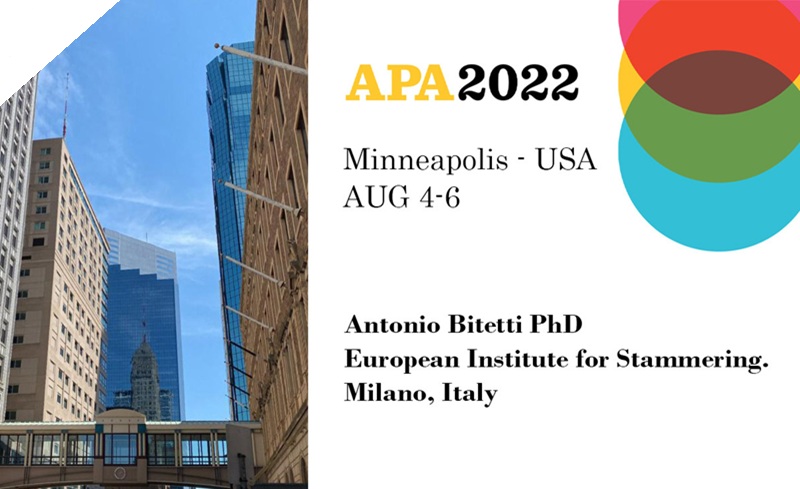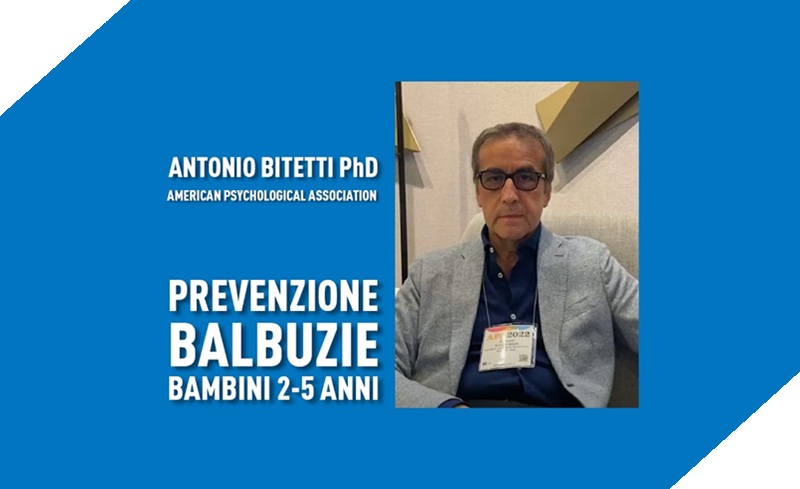Stuttering therapy is an open field, where different interpretations of the same problem are compared and sometimes clash. In fact, even in the linguistic definition, many talk about stuttering and some persist in calling it stuttering. Some authors talk about a problem to be re-educated in language and others approach the problem from a strictly psychological point of view.
Everyone unanimously agrees on a characteristic point of this disorder and that is: The stutterer knows very well what he wants to say, but is unable to express it in a fluid and serene way, as the vast majority of the population does. At this point, it is natural to ask why the stutterer has difficulty speaking when he relates to others, and instead does not stutter when he is alone. The answer cannot be simple and banal, since it involves those cognitive, emotional and relational aspects that language has in itself.
We know that through language, human beings create connections, express emotions, ideas, projects and therefore, we all recognize the intrinsic value of this powerful tool. Language has a structural or genetic basis and an acquired basis, of a cultural or environmental type (Chomsky N.). In childhood, the child experiences an important phase in his delicate evolutionary period and is called the babbling phase, in which the child engages in the best possible research to converge structural aspects and cultural aspects.
The same happens in walking, the child gradually learns to coordinate his movements, according to a series of trials and errors, also on the basis of a process of strengthening his own musculoskeletal system. Once he acquires the entire sequence, the child will be able to walk alone and without the help of adults. Language follows the same logic, but unlike motor activity, language has an important relational value, since through it we are able to express emotions, sometimes, in some negative or traumatic experiences, even with a strong aggressive value.
This has pushed Dr. Bitetti to delve into the real reasons behind this widespread disorder, which, let us remember, affects 2-3% of the national population. In a recent interview he gave to a Spanish television station, the journalist recalled that in Spain there are at least 800,000 people affected by stuttering. In Italy, with a larger population than the Spanish one, we are in the order of a million people. Although, and it is appropriate to clarify, many statistics should be further investigated, since many forms of stuttering can be simple manifestations of lisping, mistaken for stuttering.
Dr. Bitetti’s research Bitetti in the field of stuttering treatment, who is also the author of three books on stuttering (Bitetti A., 2001, 2006, 2010) the last one also translated into English and German, have focused on the mechanism of emotional control and in the case of those who suffer from stuttering, it becomes a control of the peripheral part of language, that is, the word. The vast majority of the population does not control the word while speaking, they know that it will be an automatic process, just as it happens in walking. No one would dream of controlling and verifying the movements of the legs during a walk or during a run, if we did, we would risk blocking ourselves or strongly conditioning the spontaneous activity.
Therefore, control is the real negative element of those who stutter (A. Bitetti, Emotions, Behavior and Control, 2016) and it is an aspect learned as a child, in conjunction with events with a strong negative valence, such as the birth of a sibling, conflict between parents or different experiences in which frustration and consequent aggression predominate. If left free to consolidate, in the long run, the control mechanism can create a chronic disorder, commonly called stuttering.
Treatment of stuttering in very young children.
Dr. Bitetti has explained in various institutional contexts, such as the important congress of Phoniatrics and Speech Therapy, held in Bari in 1999, that stuttering represents an adaptive symptom at an age in which the child could not adequately manage an emotional turmoil that would have had greater repercussions in his psychic sphere. Only that not having received suitable therapy, the child (we are talking about children aged 2-5 years), remained imprisoned and made the whole dynamic in question become chronic.
If kept active, this disorder risks compromising the normal relational and emotional growth of the child, to the point of making him acquire as an adult, what Dr. Bitetti defines: “the stutterer’s habit”. Stuttering, or rather stammering, in the initial stages is an adaptive mechanism that should be abandoned in a short time.
evi, this is why it is necessary to intervene early, especially before the adolescent period, even better before it becomes definitively chronic.
This is why Dr. Antonio Bitetti has extended his model of care intervention also in a preventive manner, in those children under 4-5 years of age, who have maintained active stuttering, but cannot be defined as stuttering children. This extension of his Integrated Approach is an achievement and an absolute novelty in the national panorama and is aimed at parents who would like to intervene quickly, but do not receive adequate responses from any area in Italy.




